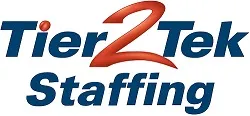How to align recruiters and hiring managers is one of the most important elements of building a strong, consistent hiring process. When these two roles operate in sync, teams reduce time to hire, strengthen candidate quality, and create predictable recruiting outcomes. Misalignment, however, leads to delays, frustration, and a poor experience for candidates and hiring teams alike. This article explores how to create tight collaboration, clearer communication, and shared expectations so both sides can move efficiently and confidently through the hiring cycle.
Establishing Clear Role Ownership
Clarity is essential for productive recruiter and hiring manager partnerships. Each side should understand the responsibilities they own during the hiring process so no one duplicates work or leaves gaps that slow hiring down.
Define Responsibilities Early
Creating alignment starts with a shared understanding of who drives each stage.
- Recruiter manages sourcing strategies, candidate screening, compliance, scheduling, and market intelligence
- Hiring manager provides job expertise, interview feedback, team needs, and final decision making
- Both collaborate on expectations, candidate profile refinements, communication, and process adjustments
Align on Expectations
Setting expectations for response times, communication frequency, and decision timelines prevents unnecessary delays. These are best established before recruiting begins and documented so both sides follow the same north star.
Building a Strong Intake Meeting Framework

A structured intake meeting is one of the most effective tools for aligning recruiters and hiring managers. It sets the tone for the entire search and ensures both parties start with the same understanding of the ideal candidate profile.
What an Effective Intake Meeting Includes
An intake meeting should not be a quick conversation. It should act as a blueprint for the entire hiring process.
- The must-have skills that truly define success in the role
- Realistic nice-to-have preferences
- Examples of top performers currently on the team
- Compensation details aligned with market data
- Candidate experience expectations
- How many interview rounds are necessary and who should participate
Translate Insights Into a Hiring Strategy
The recruiter should turn the intake meeting into a clear sourcing plan. This includes which channels to prioritize, what messaging to use, and what types of profiles best match the agreed requirements.
Creating a Shared Definition of Candidate Quality

Misalignment often comes from differing interpretations of what “qualified” means. Creating a shared definition reduces friction and ensures both the recruiter and hiring manager evaluate candidates through the same lens.
Develop a Clear Candidate Profile
The candidate profile should go beyond listing skills. It should focus on outcomes and behaviors that indicate success in the role.
Include elements such as:
- The specific problems the hire needs to solve
- The type of work pace and environment the person must excel in
- Strengths and traits that predict success on the team
- Assessments or work samples that help validate ability
Use Scorecards for Consistent Evaluation
Scorecards give structure to decision making and limit bias. Recruiters and hiring managers should use the same criteria when evaluating applicants.
Benefits of scorecards:
- More objective interview decisions
- Clearer alignment among interviewers
- Easier identification of standout candidates
Strengthening Communication and Feedback Loops

Effective communication is one of the strongest predictors of recruiter and hiring manager alignment. Without consistent communication, misunderstandings grow and the hiring process slows.
Establish a Standard Communication Rhythm
A weekly or biweekly check-in keeps the recruiting pipeline moving. These touchpoints should include:
- Pipeline updates
- Feedback on recent candidates
- Any role or requirement adjustments
- Discussion of bottlenecks or market challenges
Short, frequent updates prevent misalignment and build trust.
Make Feedback Actionable
One of the most common friction points is vague or slow feedback. Hiring managers should provide clear and timely input. Recruiters should guide them by asking targeted questions such as:
- Which competencies did the candidate meet or fall short on
- What changed between their resume impression and interview performance
- What specific examples support the interview decision
Using Data to Guide Alignment

Data gives both parties objective insights that support productive decision making and reduces tension that can come from subjective opinions.
Data Points That Strengthen Alignment
Recruiters and hiring managers should use shared data such as:
- Time to fill
- Source of hire
- Pipeline conversion rates
- Market availability and compensation benchmarks
- Decline reasons and candidate sentiment
These metrics help hiring managers understand market realities and help recruiters adjust strategies based on actual outcomes.
Set Goals Based on Data
Shared goals help both sides remain unified. Examples include:
- Time to respond to candidate submissions
- Agreed number of qualified candidates needed before interviews begin
- Timeline from first interview to final decision
Goals should be realistic and revisited as the market shifts.
Improving Collaboration Through Transparency

Recruiter and hiring manager partnerships work best when transparency is high. This helps both parties understand what the other is handling and where support is needed.
Share Market Insights
Recruiters should regularly share insights such as:
- Talent pool size and competitiveness
- Compensation trends
- Common candidate concerns
- Messages that attract or deter responses
This helps hiring managers make informed decisions and adjust expectations when necessary.
Involve Hiring Managers in Key Moments
Hiring managers should stay involved in the parts of recruiting where their influence impacts quality.
This includes:
- Employer branding on their team pages or LinkedIn
- Participating in top candidate outreach
- Supporting referrals
- Engaging in early conversations with high-value prospects
Balanced involvement leads to better candidate trust and faster decision making.
Maintaining Alignment Throughout the Hiring Process

Alignment is not a one-time event. It must be maintained throughout each phase of the search. Doing this well reduces rework and prevents miscommunication.
Revisit the Candidate Profile as You Learn
Sometimes the initial expectations shift as the team sees real candidates. Recruiters and hiring managers should regularly review whether the role needs slight adjustments.
Stay Aligned During Offer Decisions
Offer alignment is essential for closing strong candidates. Both parties should be unified on:
- Compensation flexibility
- Start date expectations
- Benefits to highlight
- Potential concerns from the candidate
A cohesive offer strategy increases the likelihood of acceptance.
Provide Tools That Support Collaboration
The right tools make it easier for both sides to stay aligned.
Helpful Tools
- Shared scorecards
- Applicant tracking systems with visibility for both sides
- Dashboards showing pipeline status
- Structured interview guides
- Centralized documentation of intake notes
These tools reduce the chance of miscommunication and keep everyone operating with the same information.
Strengthening Trust and Partnership

Real alignment requires trust. Recruiters and hiring managers must view each other as partners working toward the same hiring goals.
How to Build Trust
- Follow through on commitments
- Respond to each other quickly
- Remain open to adjustments
- Respect each other’s expertise
- Share wins and challenges openly
Trust builds long-term collaboration and makes each search more efficient than the last.
Strong alignment between recruiters and hiring managers improves efficiency, candidate quality, and overall hiring outcomes. When both sides share a clear understanding of expectations, communicate consistently, use data to guide decisions, and work as true partners, the hiring process becomes faster and more effective. This alignment strengthens team relationships, elevates the candidate experience, and ultimately supports smarter talent decisions that benefit the entire organization.
Content reviewed and published by Tier2Tek Staffing Editorial Team .

